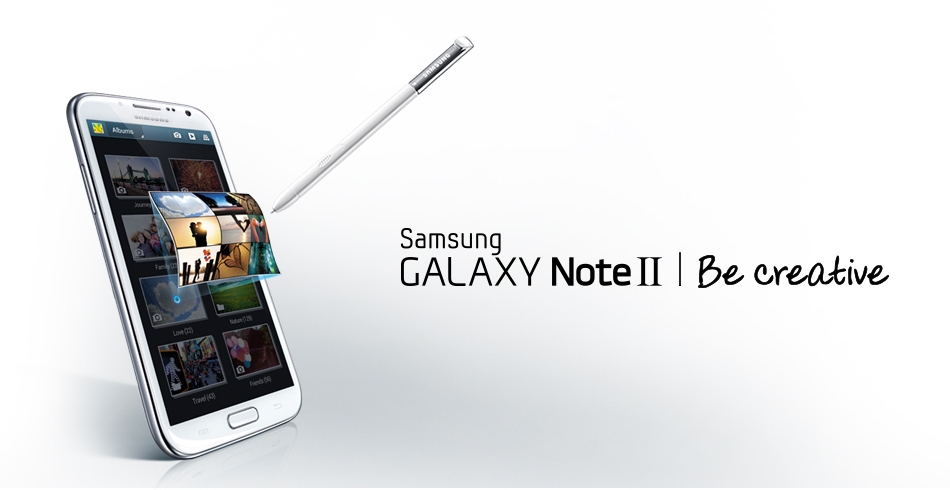By Brandon Teoh
The Samsung Galaxy Note II was officially available in Malaysia since 19 Oct 2012.
With a bigger screen size of 5.5-inches and having the resolution remains at 1280 x 720 and a lower ppi of 265, it is being retailed at RM 2,299
Other cool features include its 16:9 ratio, 5.5” HD Super AMOLED Plus display, as well as a new and improved S Pen, running on Android 4.1 Jelly Bean, 16GB user memory,2GB ram,8MP Auto Focus Camera with LED Flash with BSI and etc.
The Galaxy Note I had just been launched last year with tremendous success, reported to have sold 10 million units worldwide and Samsung expected similar wave for Note II.
Cold War
Samsung is currently in the period of cooling off from the steam of battling court case with Apple when in Aug 2012, San Jose courtroom U.S. District Judge Lucy Koh ruled that Samsung infringed Apple’s patent and awarded Apple with US$1 billion in damages. While Apple felt that justice has finally arrived, Samsung’s reaction to the ruling was to focus on the benefits of competition towards the consumer market and the need for more room for innovations to promote public betterment.
Since then, cold war intensified between the two companies.
Recently, according to The Wall Street Journal, reported in the October 4 2012 article, ‘Samsung Says Jury Foreman In Apple Case Was Biased’ – by John Letzing, in which it tells that Samsung requested the US$1 billion patent verdict to be tossed out based on the fact that a key juror was biased and untruthful about his past.
It was reported that jury Velvin Hogan failed to disclose that he had been sued by former employer Seagate Technology Inc. for breach of contract. Given the nature that Samsung has a strategic relationship with Seagate as it single largest shareholder, hence Mr. Hogan was alleged to have influenced jury members on the ruling decision out of deliberations.
Legal expect Olswang Asia felt that on legal ground, the patent war has just began, even though the mood could have already been dented in many ways. Insights from Mr. Rob Bratby, Managing Partner of Olswang Asia tells that future development of this case will see the possibility of cross-licensing deal between both parties given that there are hundreds of pending cases between Apple and the Android ecosystem (which includes Samsung, Google, HTC and others) and the recent US case involved a set of patents in the US with some Samsung handsets used as examples of infringing products – it is a common thing when it comes to intellect property war game.
More recently, Reuters reported that Apple lost tablet copyright appeal against Samsung, a ruling from high court in the U.K in which the Britain’s Court of Appeal on Thursday upheld the country’s High Court judgment that, despite some similarities, Samsung’s Galaxy tablet did not infringe Apple’s designs, in part because its products were “not as cool”.
This decision is valid throughout Europe only.
Which one is cooler ?
Further information from Reuters had revealed that the August ruling from San Hose found that Samsung infringed on patents which include :
- Design patents – patent 869,087,677 – trademarks for application icon, square icons with rounded corners, rounded metallic bezels.
- Utility patents – patent 381, 915, 163 – multi-touch scrolling, scrolling by swipe gestures, tap to zoom
- Trade dress patents – end product packaging
Personally, I still think that Apple is cooler in terms of style and technology advancement while Samsung offers more options, features, open source ecosystems and tight integration with Google’s product.
In fact, the best thing I like about Android devices is that I can now store my phone contacts as Gmail’s contacts in the cloud and never have to worry about misplacing them. Whenever I buy new phones, especially Android phones, I can easily synchronize back the contacts.
And also the fact that Samsung smartphones come with lower SAR (standard absorption rates) as compared to Apple and the Android platform is Java based in which its development tools are available for MS Windows based programmers comparing that to Apple iOS which development tools are only available for Apple machines.
Personally, I noticed a difference in terms of SAR when it comes to using iPhone and Samsung Galaxy Y – not sure about the rest.
Businessinsider.com revealed that Android garnered a bigger market share and surveys found that most people do not plan to change platform when upgrading to the next smartphones for better technology and newest features.
It was also revealed that the chances of iPhone’s users switching to Android platform are higher than the other way around mainly because not everybody is an Apple lunatic.
Much has also been said that the iOS ecosystem is of higher quality than Android particularly when it comes to the quality of applications in the AppStore than those in Google’s Play. This is partly attributed to three factors:
- Apple devices are usually more expensive and early adopters are those who can afford or those who are willing to pay more rather than wait for cheaper alternatives.
- AppStore hosts more non-free apps than Google’s Play – there are more free application being made for Android platform than for iOS platform.
- AppStore quality control is stricter than Google’s Play.
Nonetheless, although I have had used an iPod touch and bought an iPad2 as gift for my parents which they love it, and currently I am Android smartphone user, I still desire to own an iPhone in the near future. How strange could that be ?
Full Text from Q & A with Mr. Rob Bratby, Managing Partner of Olswang Asia
Q: For Apple vs Samsung, the scenario for both of them is still changing ie. 10 Samsung products were supposed to have been banned from U.S. but the ban has been delayed. Can Samsung do this?
A: There are hundreds of pending cases between Apple and the Android ecosystem (which includes Samsung, Google, HTC and others) and the recent US case involved a set of patents in the US with some Samsung handsets used as examples of infringing products. At the same time the US case was heard, courts in Seoul and Tokyo came to different conclusions, but based on different allegations between the two eco-systems. Rather than thinking of the recent US case as the concluding battle, it is better to think of it as one of a number of opening skirmishes in an ongoing war between the ecosystems. It is likely that the relatives positions will ebb and flow as cases are heard in different jurisdictions, which in practice means that what products are available will constantly change.
Q: What, in your opinion, is the likely outcome?
A: As the various cases are heard, they will establish the relative bargaining positions of the two eco-systems. Once those positions become clearer and more established, I would expect to see global settlement discussions resulting in a cross-licensing deal. The open question is who will pay whom how much, and that is what the cases will set the parameters for.
Q: How long will the ban be in place and will it apply to future iterations of the ten products?
A: See above – the position is unclear even in relation to the ten injuncted products. Current and future products were not addressed in the case and it seems that Samsung is already altering its designs to seek to avoid future bans. Of course, once a cross-licensing settlement is agreed, there will be no further ban on products sales.
Q: What about other products in the mobile space?
A: See above – the US case is one example of the Apple – Android ecosystem clash so until a settlement is reached, other devices including phones from other manufacturers and tablets are likely to be the subject of ongoing legal action and potential bans.








